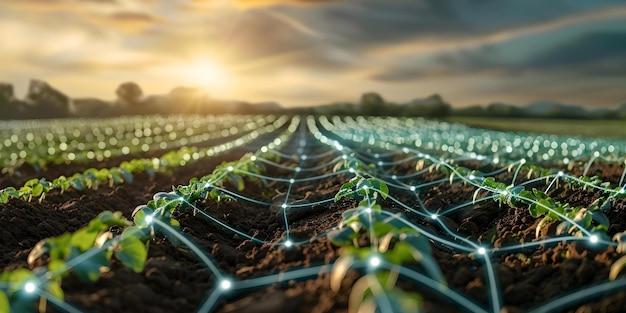The integration of smart technology into modern farming practices marks a notable shift in agricultural operations worldwide. From autonomous tractors to IoT sensors and AI-driven analytics, smart farming technologies are revolutionizing how crops are grown, monitored, and harvested. This transformation enables farmers to optimize resource usage, increase yields, and make data-driven decisions while addressing the growing demands of global food production. As agriculture continues to evolve, understanding these technological advances becomes crucial for both industry professionals and consumers. Modern agriculture is undergoing a revolutionary transformation through the integration of smart technologies. From autonomous tractors to AI-powered crop monitoring systems, farms are becoming increasingly digitized and automated. These technological advancements are reshaping customary farming practices, improving efficiency, and addressing critical challenges in food production.
Precision agriculture stands at the forefront of this evolution, utilizing GPS-guided machinery and detailed mapping systems. Farmers can now optimize their field operations with centimeter-level accuracy, reducing waste and maximizing resource utilization. Automated irrigation systems, equipped with soil moisture sensors and whether monitoring capabilities, deliver precise amounts of water exactly when and where crops need it.
Drone technology has emerged as a game-changer in crop surveillance and management. These aerial platforms, equipped with multispectral cameras and advanced sensors, provide farmers with detailed insights into crop health, pest infestations, and nutrient deficiencies. Real-time data collection enables swift response to emerging issues, preventing crop losses and optimizing yield potential.
robotic systems are increasingly handling labor-intensive tasks such as harvesting, weeding, and crop maintenance. These machines operate around the clock,significantly reducing labor costs and addressing workforce shortages.Advanced computer vision and machine learning algorithms enable robots to identify ripe produce, distinguish between crops and weeds, and make real-time decisions about plant care.
Internet of Things (IoT) sensors deployed across fields create interconnected networks that continuously monitor environmental conditions. These smart devices track parameters such as soil pH, temperature, humidity, and nutrient levels. The collected data feeds into sophisticated farm management systems, enabling data-driven decision-making and predictive analytics.
Automated greenhouse systems represent another frontier in smart farming. Climate control systems, automated ventilation, and LED lighting create optimal growing conditions year-round. These controlled environments can be monitored and adjusted remotely, ensuring consistent crop quality and extended growing seasons.
Livestock farming has also embraced automation through smart collar systems and automated feeding stations. These technologies track animal health, movement patterns, and feeding behaviors, enabling early detection of health issues and optimized nutrition management.
Blockchain technology is being implemented to enhance supply chain transparency and traceability. from field to fork,automated systems record and verify each step of the agricultural process,ensuring food safety and authenticity.
The integration of 5G networks is amplifying the potential of smart farm technologies, enabling faster data transmission and real-time operations. This connectivity supports the coordination of multiple automated systems and facilitates remote monitoring and control of farm operations.
These technological innovations are not just improving operational efficiency; they’re also contributing to environmental sustainability. Precise resource management reduces water consumption, minimizes chemical inputs, and helps preserve soil health, making agriculture more environmentally responsible while maintaining productivity.










